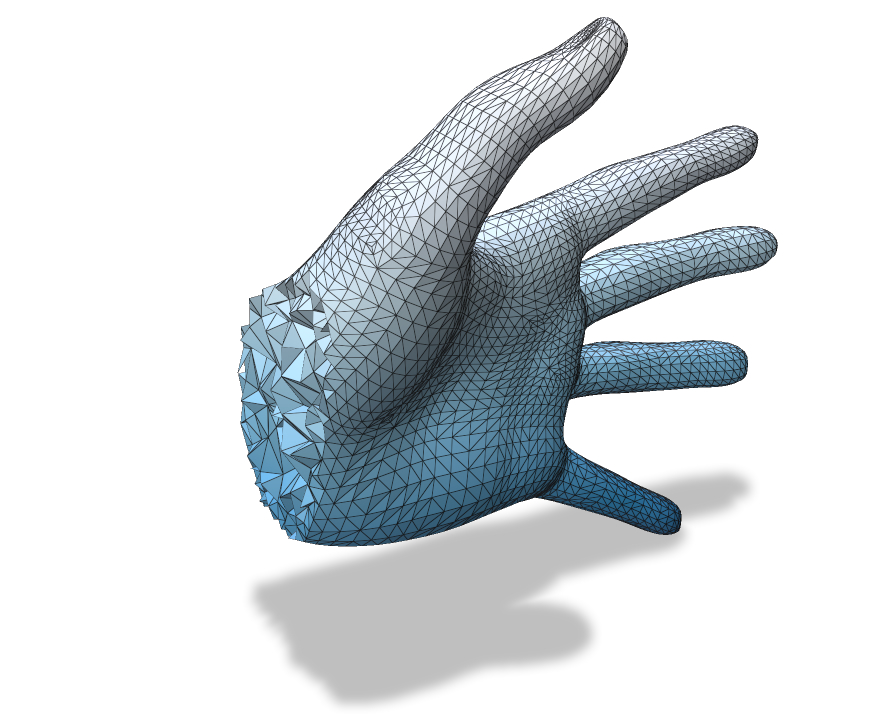Scalar Quantities
Visualize scalar (real or integer)-valued data at the elements of a volume mesh.

Example: showing a scalar on vertices (here, random values)
# ... initialization, create mesh ...
ps_vol = ps.register_volume_mesh("test volume mesh", verts, tets=tets)
n_vert = verts.shape[0]
n_cell = tets.shape[0]
# Add a scalar function on vertices
data_vert = np.random.rand(n_vert)
ps_vol.add_scalar_quantity("my vertex val", data_vert)
# Add a scalar function on cells (with some options set)
data_cell = np.random.rand(n_cell)
ps_vol.add_scalar_quantity("my cell val", data_cell, defined_on='cells',
vminmax=(-3., 3.), cmap='blues', enabled=True)
// Show the GUI
ps.show()
Add scalars to elements
VolumeMesh.add_scalar_quantity(self, name, values, defined_on='vertices', enabled=None, datatype="standard", vminmax=None, cmap=None)
Add a scalar quantity to the mesh.
namestring, a name for the quantityvaluesa lengthNnumpy array, scalars at vertices/cellsdefined_onone of'vertices','cells', is this data a value per vertex or a value per cell?
This function also accepts optional keyword arguments listed below, which customize the appearance and behavior of the quantity.
Inspecting with slice planes
Slice planes have special functionality for volume mesh vertex values—they can inspect quantities on volume meshes and render them on the interior of the volume. See the slice plane documentation for details.
Categorical Scalars
Scalar quantities can also be used to visualize integer-valued labels such as categories, classes, segmentations, flags, etc.
Add the labels as a scalar quantity where the values just happen to be integers (each integer represents a particular class or label), and set datatype='categorical'. This will change the visualization to a different set of defaults, adjust some shading rules, and use a distinct color from the colormap for each label.
Scalar Quantity Options
When adding a scalar quantity, the following keyword options can be set. These are available for all kinds of scalar quantities on all structures.
Keyword arguments:
enabledboolean, whether the quantity is initially enabled (note that generally only one quantitiy can be shown at a time; the most recent will be used)datatype, one of"standard","symmetric","magnitude", or"categorical", affects default colormap and map range, and the categorical policies mentioned abovevminmax, a 2-tuple of floats, specifying the min and max range for colormap limits; the default isNone, which computes the min and max of the datacmap, which colormap to use- isoline keywords (darker-shaded stripes showing isocontours of the scalar field):
isolines_enabledare isolines enabled (default:False)isoline_styleone ofstripe,'contour(default:stripe)isoline_periodhow wide should the darkend stripes be, in data units (default: dynamically estimated)isoline_period_relativeif true, interpret the width value as relative to the world coordinate length scale (default:False)isoline_darknesshow much darker should the alternating stripes be (default:0.7)isoline_contour_thicknesshow thick should the contour lines be (default:0.3)
If not specified, these optional parameters will assume a reasonable default value, or a persistent value if previously set.